Figures & data
Table 1. Linear, exponential, and binomial regressions for AAC, WSI, and SP, respectively. X = ID (irradiation dose, kGy).
Figure 1. Ratio of apparent amylose content (AAC) of irradiated starch (IS) to AAC of native starch (NS) vs. irradiation dose (▲: wheat starch, ■: potato starch). AAC of native starches were: 34.5% ± 0.2 for wheat starch and 30.1% ± 0.1 for potato starch.
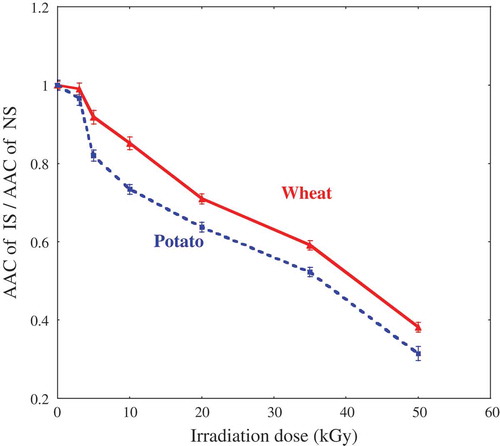
Figure 2. Ratio of water solubility index (WSI) of irradiated starch (IS) to WSI of native starch (NS) vs. irradiation dose (▲: wheat starch, ■: potato starch). WSI of native starches were: 3.3% for wheat starch and 2.6% for potato starch.
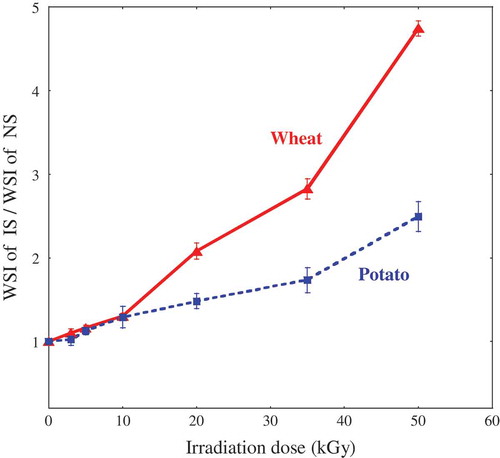
Figure 3. Ratio of swelling power (SP) of irradiated starch (IS) to SP of native starch (NS) versus irradiation dose (▲: wheat starch, ■: potato starch). SP of native starches were: 11.5 ± 0.1 (g/g) for wheat starch and 33.7% ± 1.1 (g/g) for potato starch.
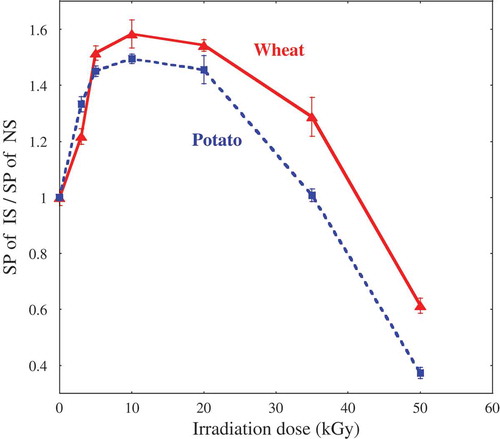
Table 2. Gelatinization maximum consistency (Cmax, UB) of native and irradiated wheat and potato starches prepared at different concentrations: 16% (w/v) for wheat starch and 8% (w/v) for potato starch.
Figure 4. Shear stress versus shear rate curves of native and irradiated A: wheat; and B: potato starch pastes obtained at different irradiation doses: (●) 0 kGy; (■) 3 kGy; (▲) 5 kGy; (□) 10 kGy; () 20 kGy; (x) 35 kGy; and (+) 50 kGy.
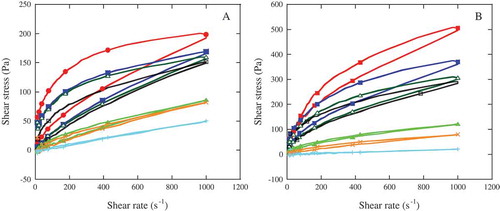
Figure 5. Shear stress versus shear rate curves of native wheat (▲) and potato (■) starch pastes prepared at different concentrations: 16% (w/v) for wheat starch and 8% (w/v) for potato starch.
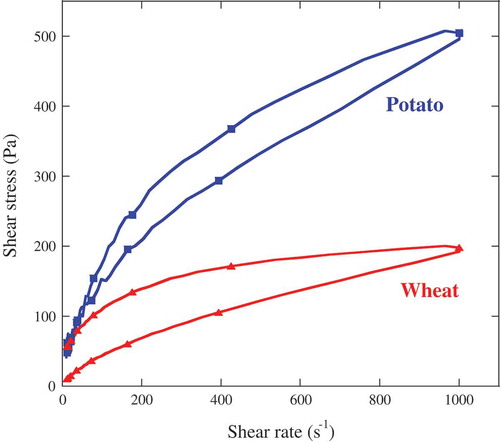
Table 3. Hysteresis buckles surface S (cmCitation2) and parameters of the power law model shear stress-shear rate curves of native and irradiated wheat and potato starches.
Table 4. Maximum extrusion force (Fmax) and extrusion surface (SE) of native and irradiated starches.
Figure 6. Scanning electron micrographs of: potato starch in the dry state (A–D); potato starch pastes heated to 61.3°C (E–H); wheat starch pastes heated to 58.5°C (I–L; 500×; 5.0 kV). Irradiation doses: (A, E, I) 0 kGy, (B, F, J) 5 kGy, (C, G, K) 20 kGy, and (D, H, L) 50 kGy.

